-
Car Reviews
- All reviews
- Midsize SUVs
- Small cars
- Utes
- Small SUVs
- Large SUVs
- Large cars
- Sports SUVs
- Sports cars
- Vans
Latest reviews
- Car News
-
Car Comparisons
Latest comparisons
- Chasing Deals
Benz’s longest-running model is renewed for an all-new generation that mostly succeeds in improving comfort and quality, but at a considerable price
Even though SUV-derived revenue has steamrolled that of sedans on Mercedes-Benz’s balance sheets for years now, the Stuttgart marque cares – a lot – about the E-Class. Why? Because the brand traces the lineage of this upper-midsize luxury sedan to 1953’s ‘Ponton’, making the modern ‘E’, in its view, the longest-running Mercedes model of all.
That means, then, that Benz puts effort in to getting this car right as one of the brand’s pillar vehicles. Whether this thinking is derived from nostalgia depends mainly on where you live: sedans are still a big deal in the United States and China, while E-Class station wagons remain on the menu for Europe’s well-heeled (in high-trim form) or as taxis (in decidedly lower specs).
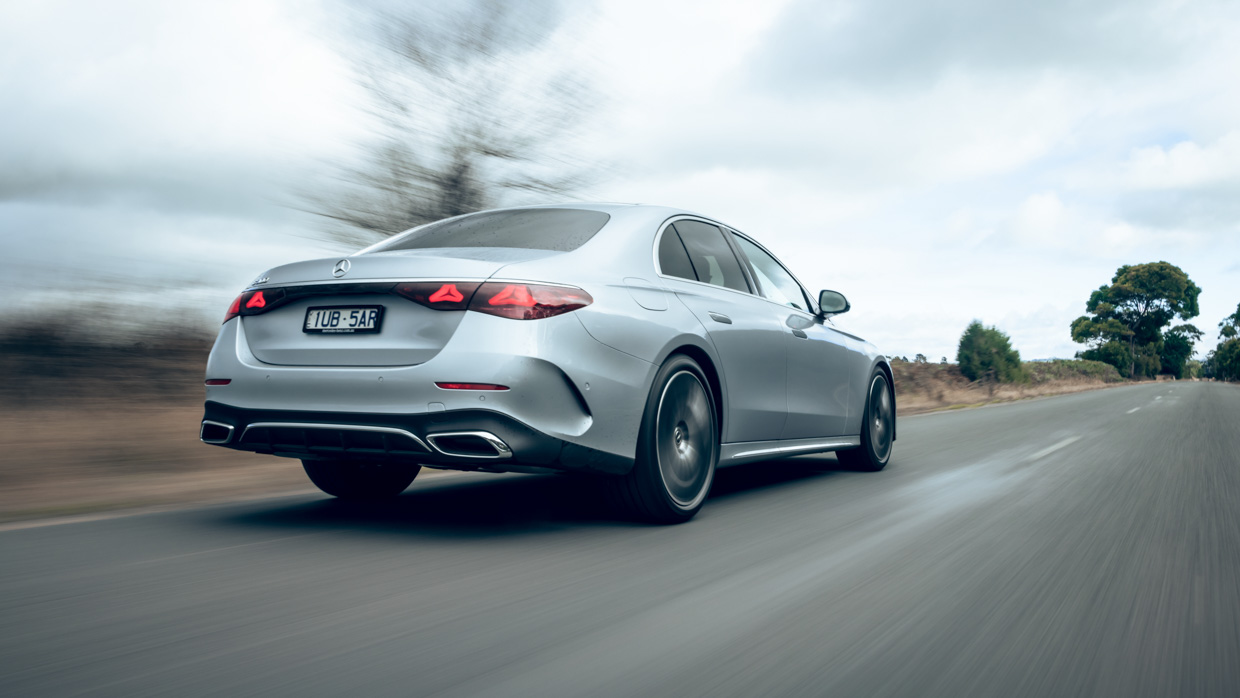
Not so much in Australia, where sedans like the ‘E’ (and main combustion-powered rivals, the BMW 5 Series and Audi A6) have receded to a slim niche of buyers who value either the lower-key aesthetic, or typically superior dynamics, of low-slung cars.
Mercedes-Benz moved 421 examples of the E-Class locally in 2023; BMW shifted 507 5ers. In the same period, Mercedes sold 3344 GLE-Class SUVs.
There has been a small renaissance in sedan sales…but generally only if they are electric: the Porsche Taycan was the best-selling large luxury car in Australia in 2023, and Benz’s own electric EQE outsold the E-Class – but some of the latter appear to have been demonstrators given the sheer number available with low mileage in the classifieds.
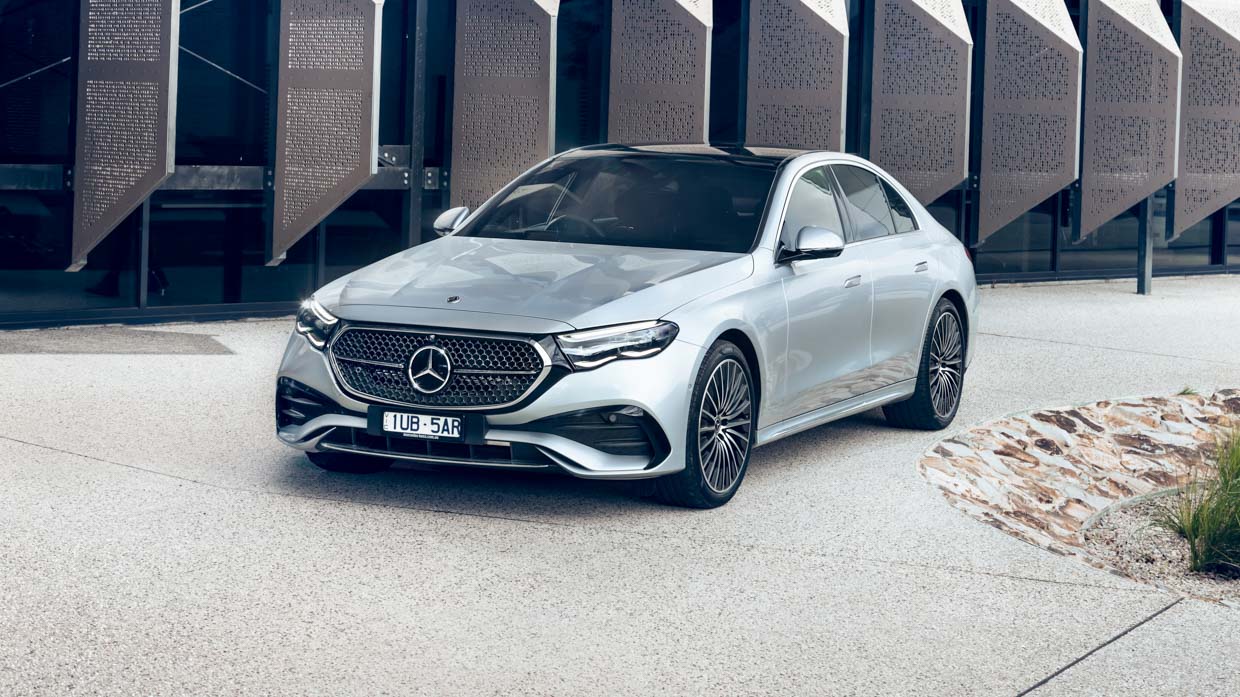
And now there’s a new E-Class for 2024: chassis-coded ‘W214’, the latest car entails a through refresh of the old one’s platform with all-new styling inside and out. For Australia the range is tiny – until AMG versions arrive, there is one model: a 2.0-litre, turbocharged, mild-hybrid petrol sedan badged E300, priced at $131,500 before on-road costs and options.
If you’re after a six-cylinder (or a diesel) head to a BMW or Audi dealership. Mercedes will market E-Classes with larger engines in Australia, but they will be AMG products rather than comfort-specification vehicles.
If you’re after a demure E-Class spec, it’s four-banger petrol or nothing. Wagon? Not in this country. Coupe or convertible? Present, renamed CLE.
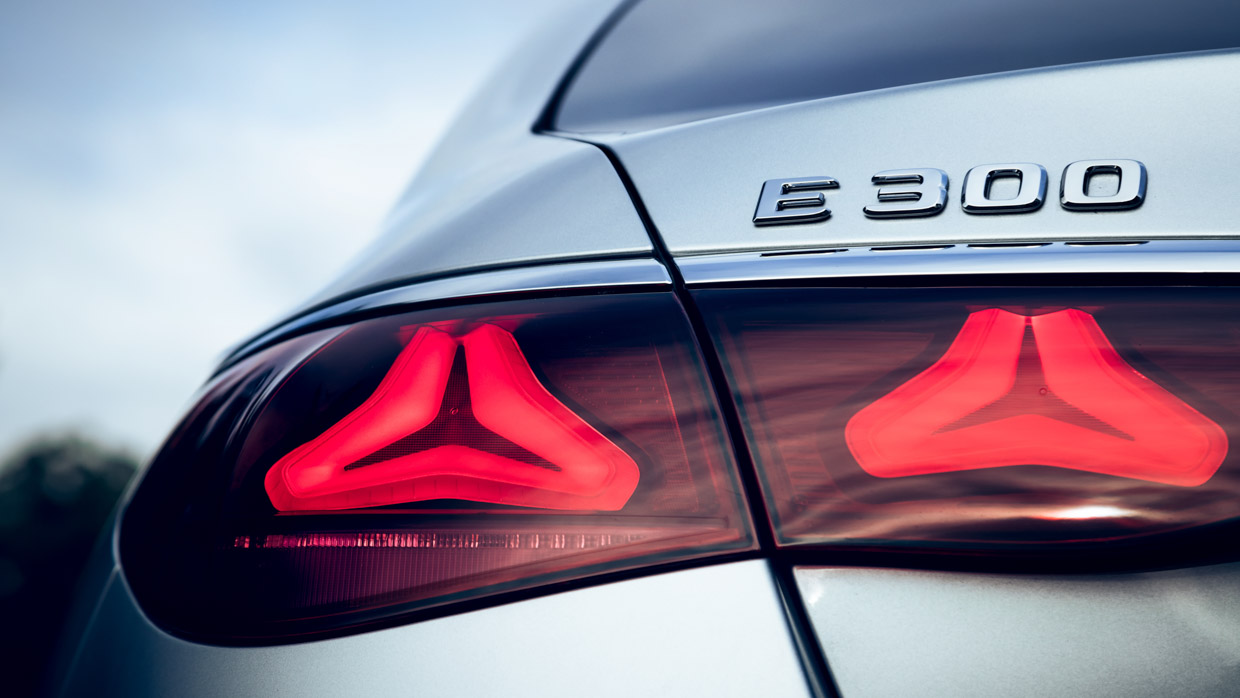
As an aside, it’s a frustration (for a few people at least) that the only non-AMG Mercedes-Benz sedan you can buy in Australia with a six-cylinder engine is the $248,815 S-Class in S450 trim. That car is also the sole Mercedes still sold locally with an available standing bonnet star … aside from the Maybach models (from $327,990).
Times aren’t what they used to be at Mercedes, with much of the Australian range of vehicles geared towards a decidedly different buyer to 20 years ago: appealing to old money and tradition is not the priority – although the retention of the E-Class and the S-Class do offer (a degree of) respite from total and complete AMG-ificiation.
So, if you’re a target customer still interested in wafty sedans in understated configuration (you’re reading this review, after all), is the new E-Class for you? It may be, but don’t go expecting a return to the halcyon days of the W212 chassis (2009 to 2015) – which you may have owned now or in the past. Nowadays, the ‘E’ is a clearly techier, sportier vehicle than ever.
On paper, the E300 doesn’t appear to be a value buy in the segment: for a four-cylinder, it’s actually priced rather ambitiously when considering the lay of the land of equivalent luxury sedans in this segment. Consider the following landscape (prices before on-road costs, and correct as at August 2024):
By price, the E300 sits firmly among the six-cylinder cars, not among the four-cylinders. That positioning is particularly assertive when you consider that the BMW 5 Series is, like the E-Class, also new for 2024…and yet you can have a (slightly less powerful) 520i for $16,600 less than the Benz, or a six-cylinder diesel 540d for $3400 more than the E300.
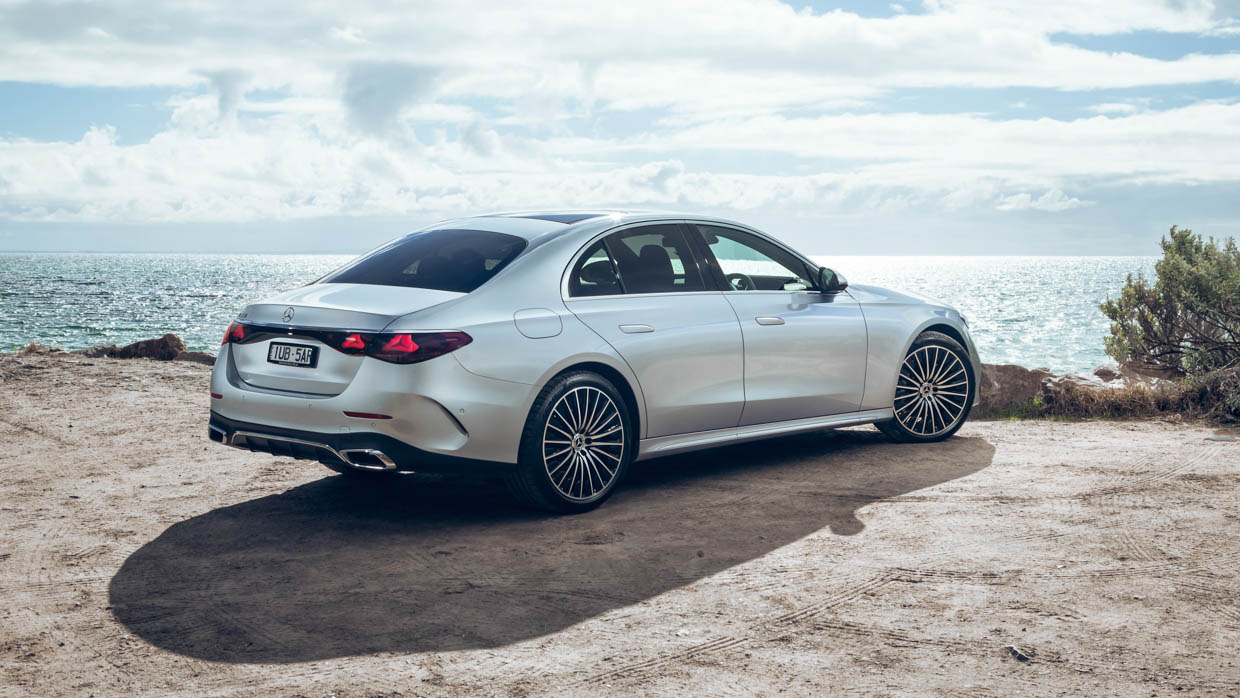
Not to mention the Audi, which gives buyers not just the choice of a V6 petrol sedan for E300 money but also an interesting choice in the Allroad 45 TDI V6 diesel wagon…
Back to the E300. Standard features include:
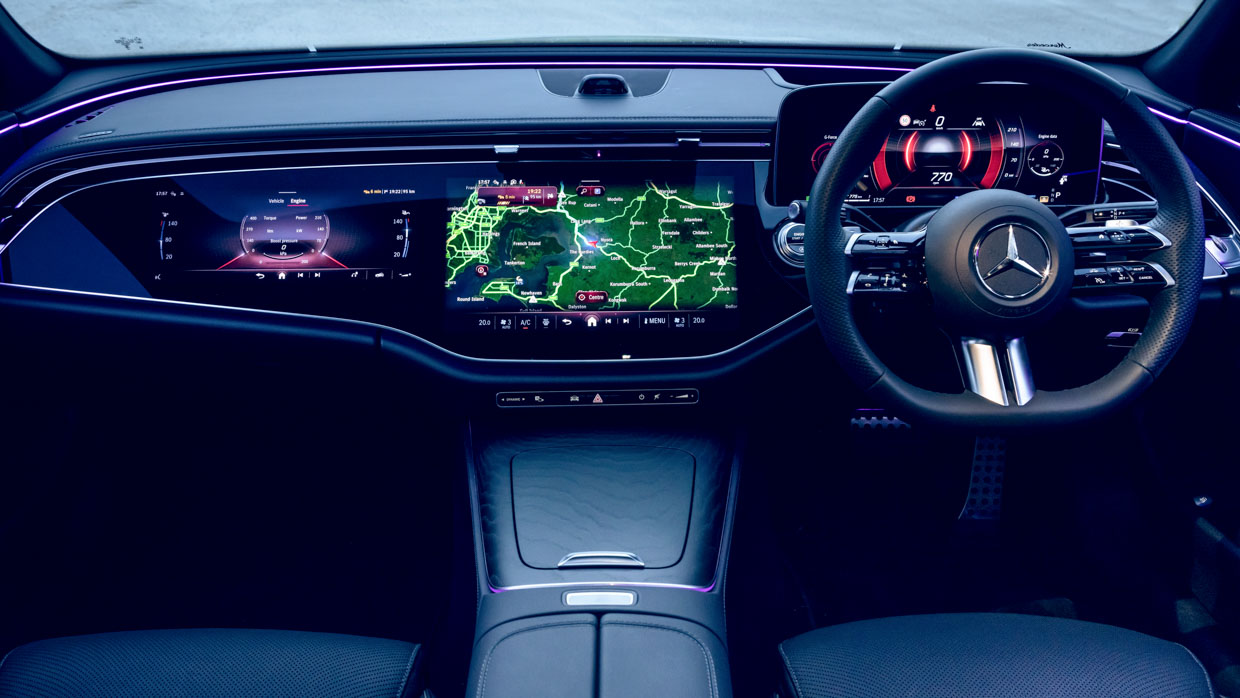
Many buyers will want to opt for the optional Premium Plus Package ($9400), which brings additional specification in the form of:
For an additional $5200, the Energising Package Plus adds:
Mercedes-Benz offers a range of colours as no-cost options on the new E-Class. Polar White is non-metallic, while no-cost metallics take in High-Tech Silver, Graphite Grey, Nautic Blue, Obsidian Black, and our tester’s early-noughties style Verde Silver, a shimmering silver-green hue.
Available at additional cost are three subsidised paint colours from the brand’s Manufaktur special order programme: Opalite White Bright ($1923), Patagonia Red Metallic ($1923), and Alpine Grey Solid ($2230).
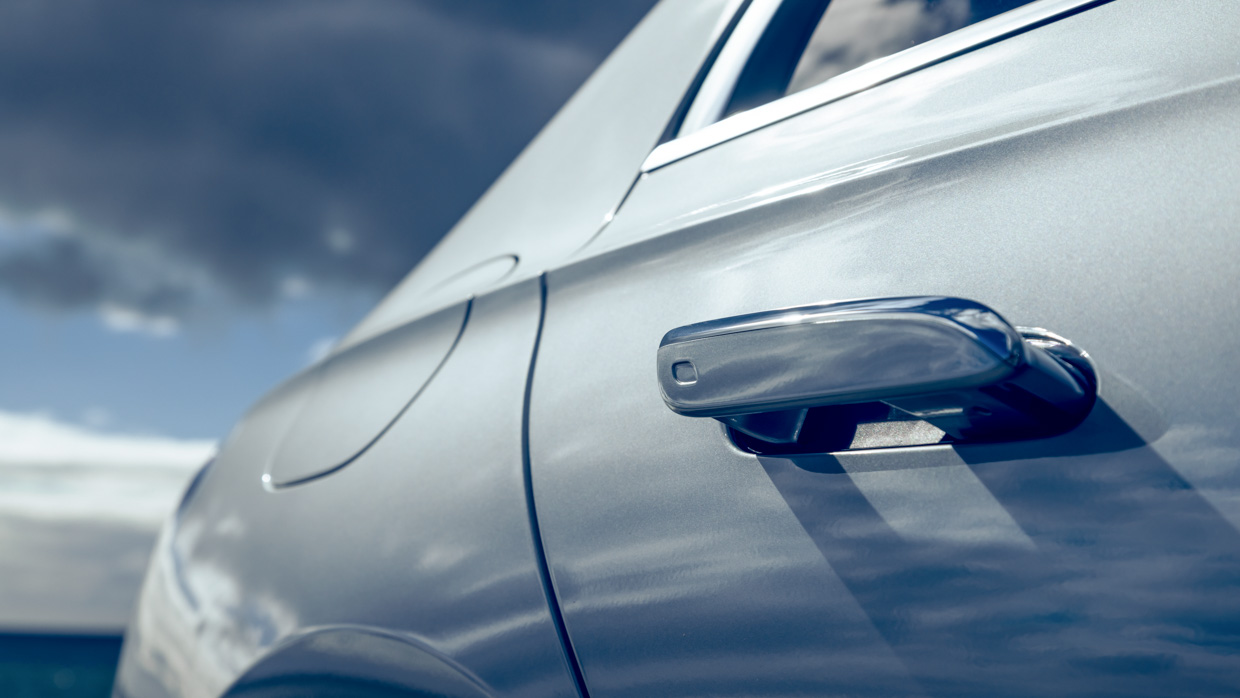
Inside, only a black leather interior with Sport front seats comes as standard – accessing any other interior colour requires first ticking the steeply-priced Premium Plus package – which swaps black ‘Sport’ seats for more luxurious ‘Comfort’ pews available in a wider range of colours: Tonka Brown, Macchiato Beige, or Black.
We normally try to recommend a specification that hits a sweet spot in terms of features and cost. However, Mercedes-Benz has spread desirable options between the available packages – so we’d have to go fully-loaded this time at an eye-watering cost (for a four-cylinder sedan) of $146,100 before on-road costs (or about $160,000 driveaway).
In terms of colour and trim – always a subjective topic – we’d pair one of the darker metallics, such as Nautic Blue or Graphite Grey, with the Tonka Brown (tan) interior for a specification that was understated but still different from the usual white or black.
In most ways, the E300 drives like it should: gracefully. This luxury sedan is (mostly) comfortable and refined, and there’s surprising pep, too – despite having what traditionalists might view as an ‘undersized’ 2.0-litre four-cylinder engine.
Still, that engine makes 190kW of power and 400Nm of torque; it’s turbocharged and equipped with a fast-responding 48-volt mild hybrid system. Throttle response is quick and lag-free; acceleration builds quickly. Any buyer shifting to a new turbo-four E-Class from an old naturally-aspirated V6 will almost certainly find the new-gen car feels a lot quicker.
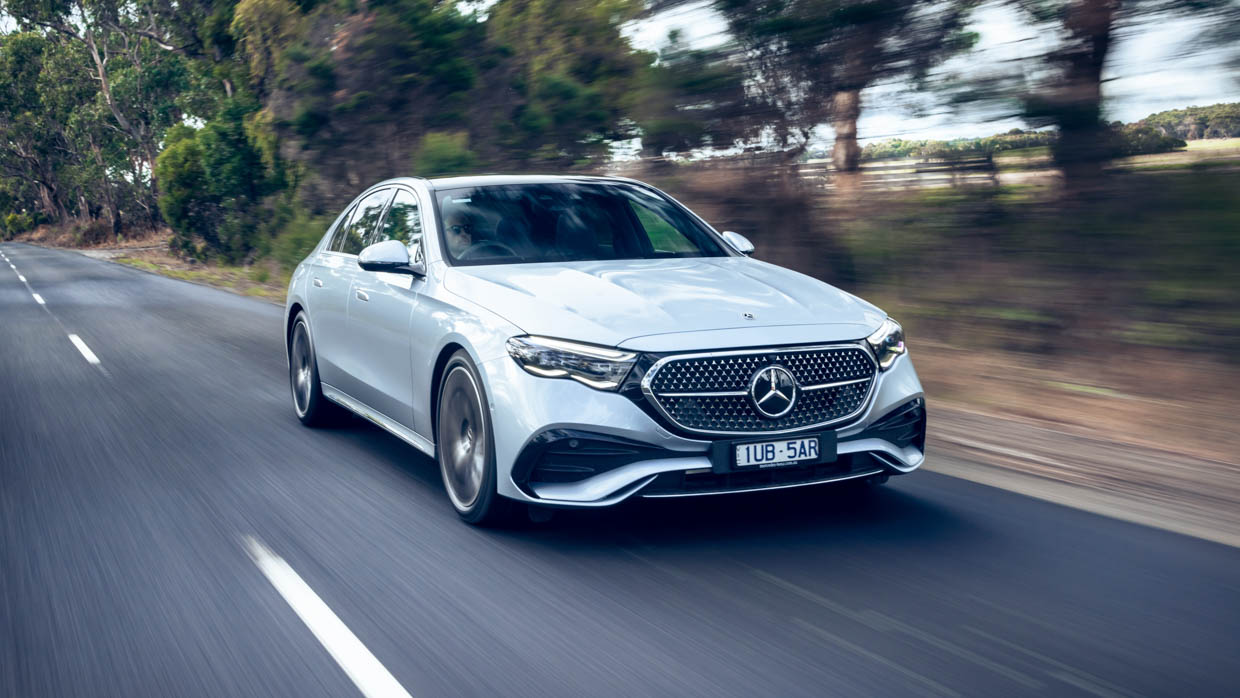
But it’s also – surprisingly – a touch agricultural. The engine is smooth enough, we suppose, but the noise from the four-pot mill is surprisingly present and even loud in the cabin under moderate to hard acceleration.
Benz’s four-cylinder is good enough…but is ‘good enough’ good enough in this segment? Sales may not be substantial – but the buyers are discerning. If costings allowed for just one non-AMG E-Class engine, why not bring in something desirable? Why not one of the turbo 3.0-litre inline six-cylinders on the global menu? America nabs a 284kW/500Nm petrol in the E450, Europe the autobahn-worthy 274kW/750Nm diesel E450d.
In any case, we wouldn’t call the engine a dealbreaker. It’s fine – but we think our wanting for a lustier six-cylinder is justified, particularly when Audi will still sell you an A6 55 TFSI V6 petrol, and BMW has confirmed it is bringing a six-cylinder diesel 5 Series back to Australia.
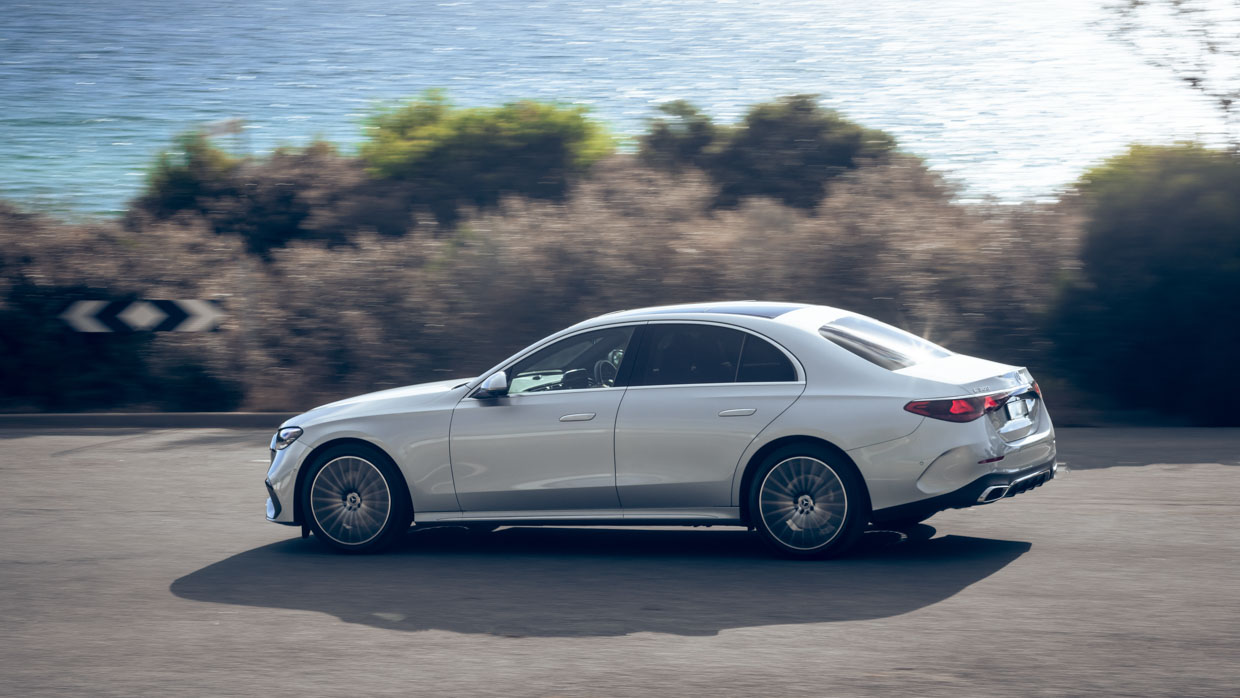
Engine aside, what of the rest of the E-Class driving experience? Mainly, it’s a serene thing to pilot or to ride in – and that nails the brief. Where rival cars aim for a luxury-sports experience, comfort-spec E-Classes should be all about isolating their occupants and sinking into luxury appointments. And this sedan delivers…if you opt for the Premium Plus Package ($9400), that is.
Why? Three words: adaptive air suspension. We haven’t driven an E-Class without it, but trusted colleagues in the United Kingdom have: it’s clear the standard non-air suspension disappoints. If you try to diligently ignore the options list, you will just have to hold your nose and tick this box.
It’s worth doing because the air suspension delivers exactly the sort of old-school barge-like comfort you want from a Mercedes-Benz E-Class – except that modern damping tech means there’s also acceptable (though not overwhelming) body control here too. In comfort mode, you waft along Australian roads with compliant, contained movements. It’s a relaxing car.
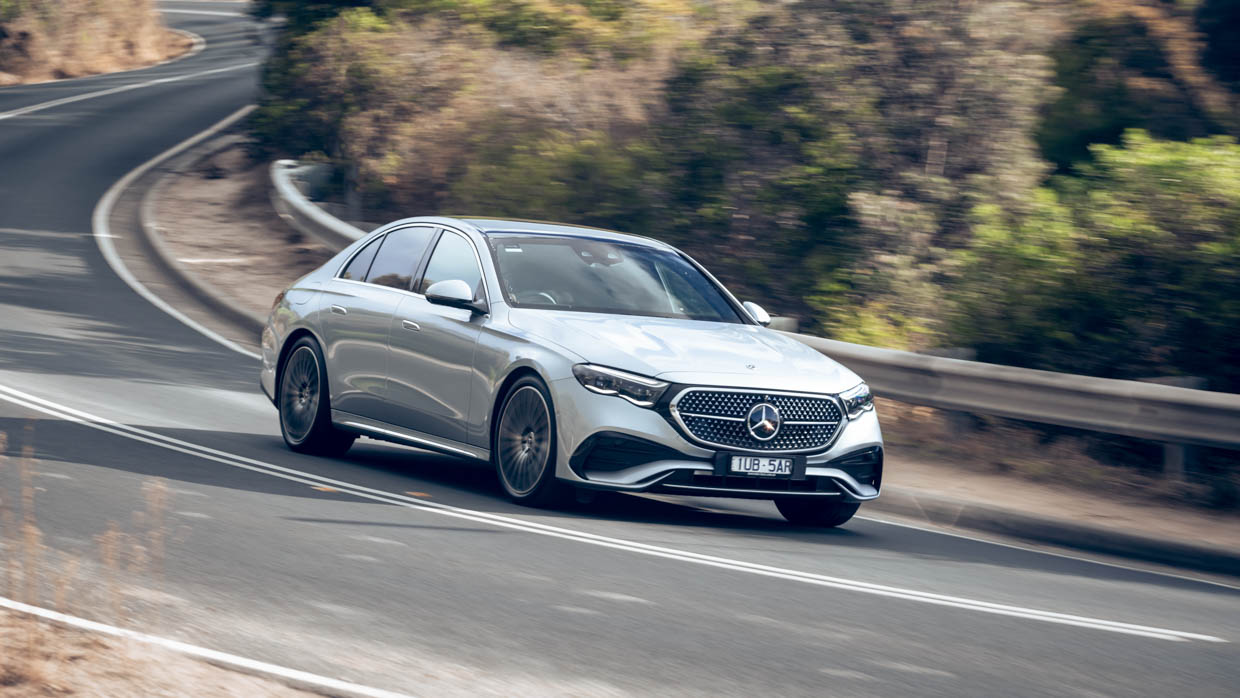
Except when you hit a square-edged pothole. Why? The air suspension’s hardware and tuning is excellent but it can’t fully alleviate the effects of the E300’s standard-fit 20-inch alloys and low-profile tyres. The AMG multi-spoke 20s look good, but they mean that a dignified ride, delivered by quality suspension, can suddenly become unruly over a moderately bad bump. There’s not enough tyre height to cushion it out.
If you were planning to do extensive country touring with an E-Class, we’d highly recommend ordering some accessory wheels – 18s or 19s off the European catalogue – no doubt at quite significant expense but we imagine the improvement to the ride on unimpressive road surfaces would be quite noticeable.
As to handling, the E300 strikes an appropriate middle-ground: it’s actually capable of being steered and pedalled enthusiastically on a fun road (and it stops very well too), but you can tell that it actually prefers to be driven in a more elegant manner.
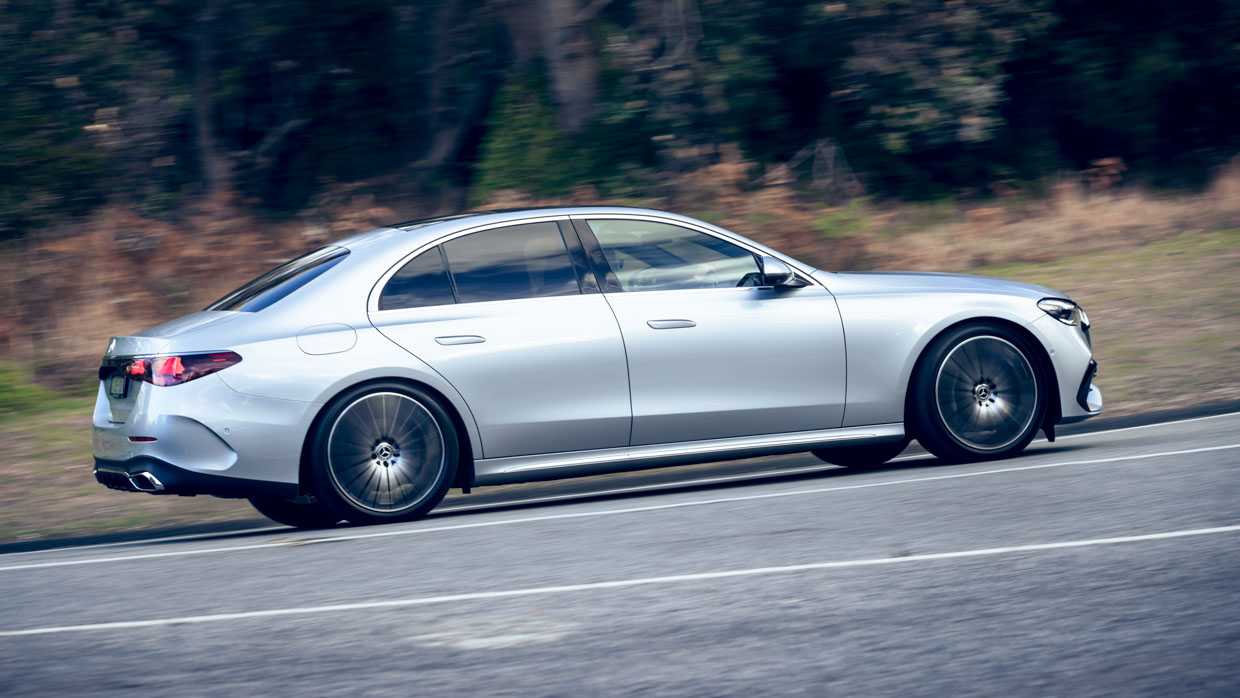
Agility is no problem, with quick steering responses and plenty of grip from the Continental rubber – and these effects are bolstered further by the Premium Plus Package, which brings four-wheel steering into the mix alongside the air suspension. Both aid cornering, with the 4WS tuned slickly to mostly dial out occasional uncanny effects as the car rotates fast.
Speaking of rotating, the E300 is rear-wheel drive for Australia. Some markets have the option of 4MATIC all-wheel drive (and the AMG versions will get this). That said, the E300 has moderate weight at 1850kg and it’s not overwhelmingly powerful, so it never feels like a RWD hot rod always wanting to step out its rear end.
On the whole, the E300 is intuitive, isolating and balanced to drive – but in repetition of one of the oldest cliches/truisms in road testing, the new BMW 5 Series is ultimately keener and more fun – as is the Audi (by a shade). But many buyers don’t want, or care about, that.
If there’s one area Mercedes-Benz felt most at ease with letting go of traditional styling for the E-Class, it’s inside. The cabin of the new E300 is a tech-fest featuring no fewer than three large displays across its dashboard – meaning lashings of pixels and gloss-black surfacing replaces more traditional inlays in this area.
Our tester was fitted with the ‘standard’ E-Class interior for Australia which is, with perhaps one exception, adequate. Genuine leather seat upholstery is standard, and the front pews are heated and have memory; all the triple-Super Screen layout is included alongside a high-end 17-speaker Burmester stereo with plenty of oomph.
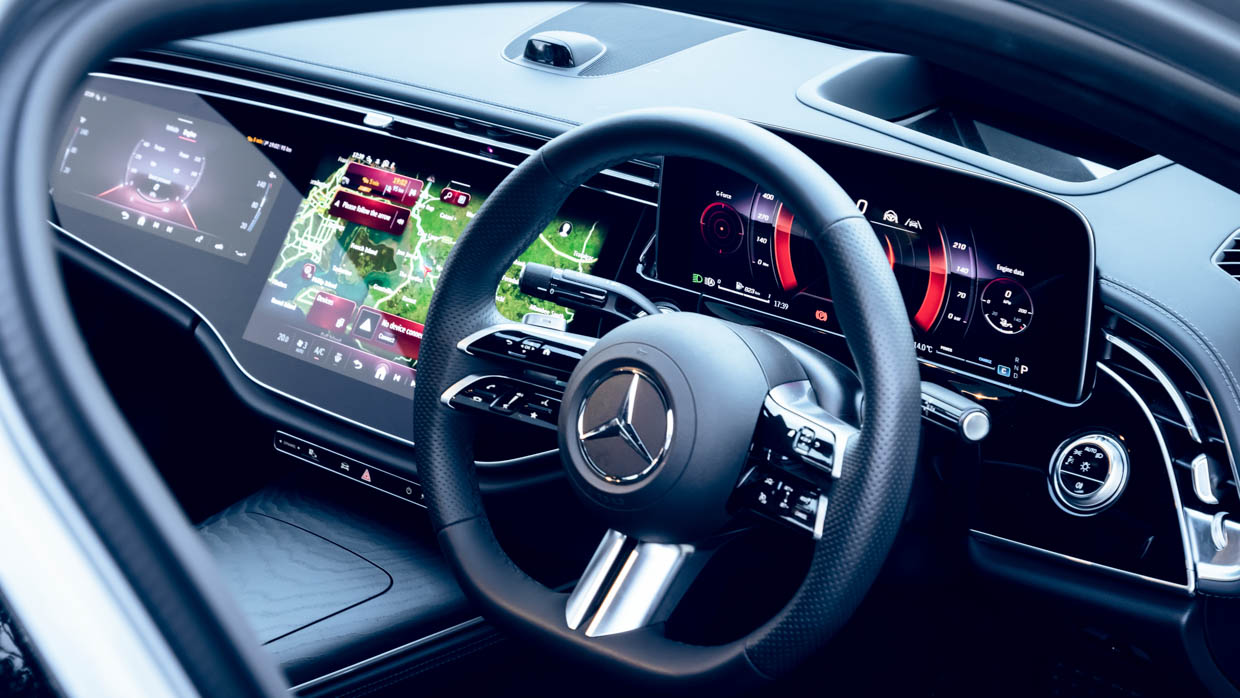
But if you want anything other than a black interior – and seats with additional cushioning – you’re back to ticking options. This time, it’s the $5200 Energising Pack Plus, which adds softer ‘comfort’ style seats with luxury headrests in a broader choice of colours, including beige, tan, or black. The pack does also heat the rear seats and front armrests.
Even the standard ‘sport’ seats are pretty broad (hardly being a sports bucket), but more drivers will be able to get comfortable in the ‘comfort’ pews which have various additional ways of electric adjustment, including for the side bolstering.
The driving position is solid – sedan-like but not too low, and visibility out of the expansive greenhouse is generally good.
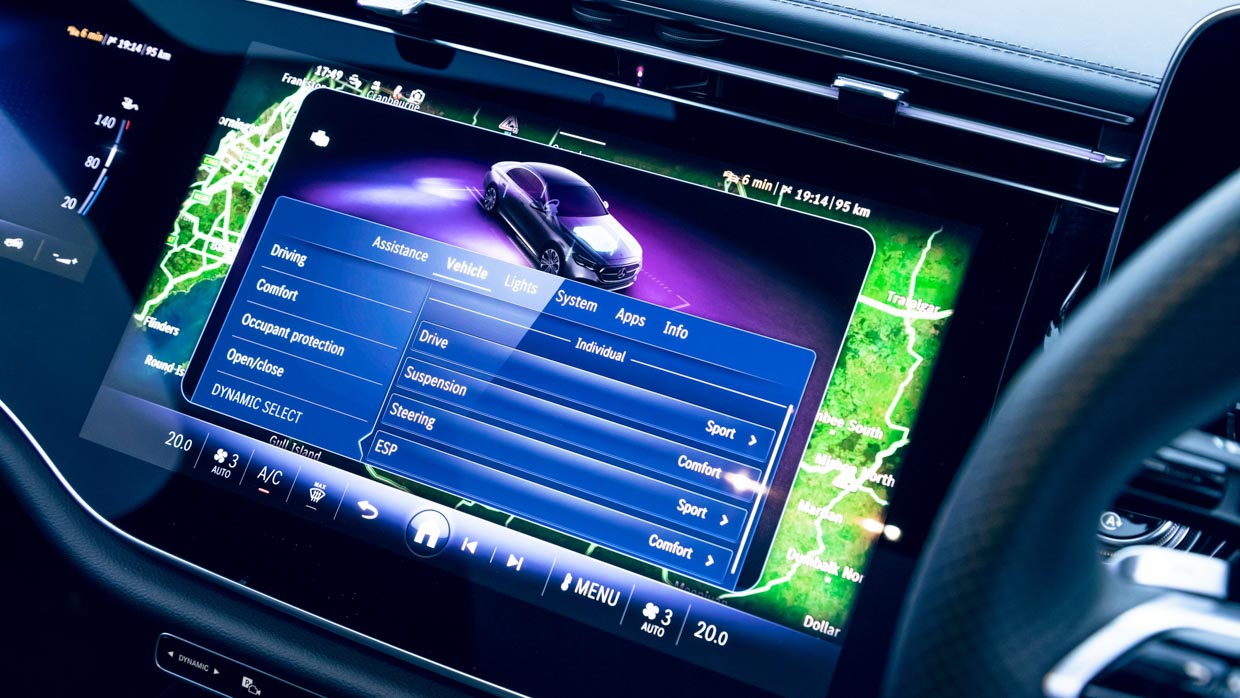
Ergonomics have been well-tested: major controls, including the nappa-hide steering wheel fall to hand (though its buttons are fiddly). Conspicuously missing is a view forward of the traditional, bonnet-mounted Mercedes star. It’s optional overseas…but not in Australia.
As with many recent Mercedes-Benz products, the E-Class has heavily-handed interior ambient lighting: hidden LED strips following the seams of many of trim pieces. Lighting settings can be customised for colour and brightness – even a rainbow effect can be chosen. Those seeking subtle lighting can lower the intensity and select classic-Benz amber.
Technologically, the two main displays (a 12-inch digital instrument cluster, and an 17.7-inch near-square central touchscreen) work well: they are bright enough to stave off even direct sun glare and the software on them is more intuitive to navigate by touch than most. Wireless Apple CarPlay and wireless Android Auto allow seamless phone projection.
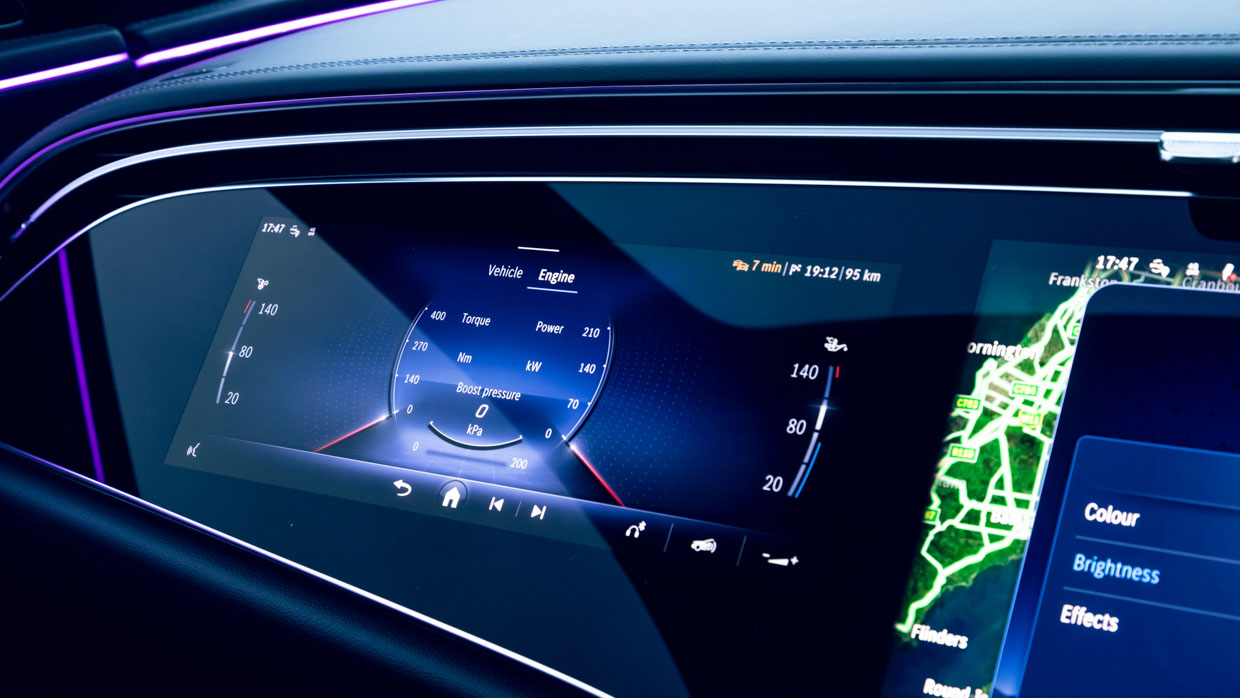
Less necessary is the standard-for-Australia, dedicated passenger display: optional overseas, this display rips out elegant wood trim on the dash for more screen real estate.
Our road testing partner fiddled with the passenger screen for a few minutes before switching it off (leaving empty black gloss) and going back to their phone; we’d prefer trim.
An E-Class is luxe and so we do look for opulent materials – the Mercedes impresses in some areas. The quality of the standard leather is a little workmanlike (upgraded for the ‘comfort’ seats) but the open-pore wood found only on the centre console is beautiful (apart from some edge scratches already present on our near-new tester).
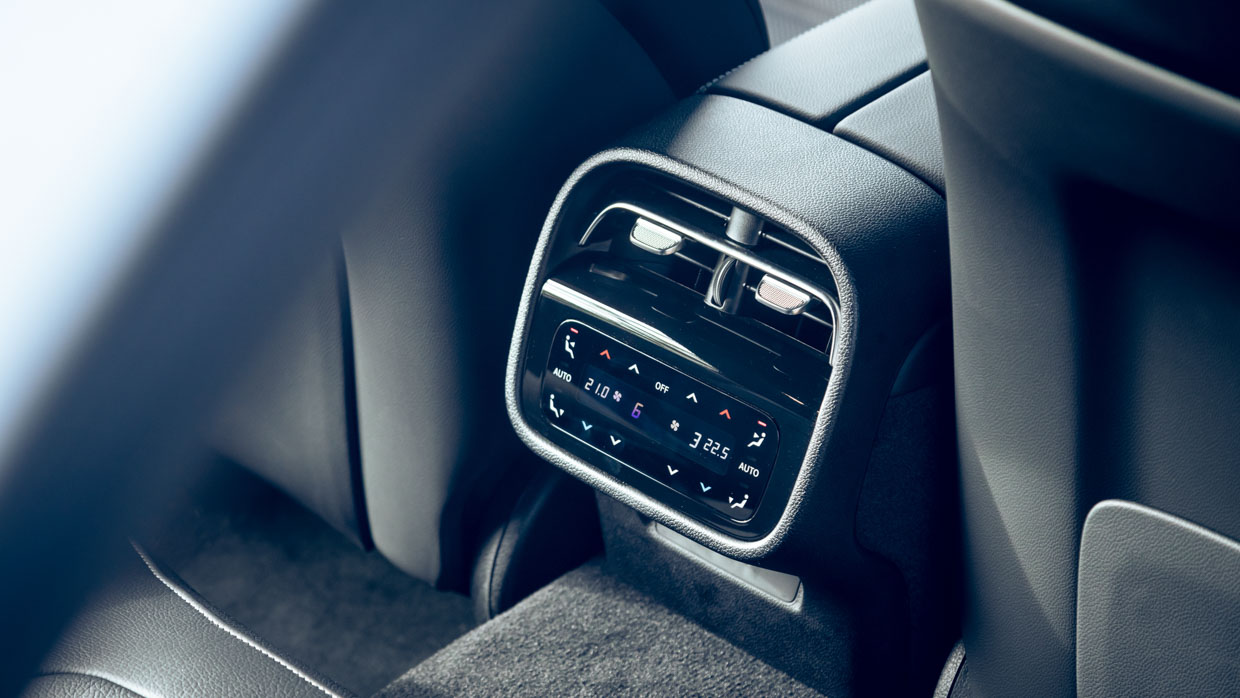
Speaking of quality, we did notice our press-vehicle E300 was better than most Mercs we’ve torn apart in recent years although a faint rattle around the panoramic opening sunroof was evident on rough roads in our ‘Verde Silver’ car.
Moving to the back seats reveals decent space for adults in row two with adequate headroom and kneeroom for six-footers. Amenities continue in the back with a fold-down centre armrest with cupholders, air vents, additional USB-C ports, and soft-touch door materials.
Further aft, this sedan’s boot measures a spacious 540 litres. Like all saloons the aperture is a bit of a problem for loading large objects (and sadly, the E-Class wagon is simply not sold in Australia, even by special customer order). But a few suitcases will get back there without issue. The back seats can be folded from the boot itself; no spare wheel is fitted.
Australia’s new car safety crash and assessment body, ANCAP, has not yet tested the E-Class locally, or translated the vehicle’s European results. This may occur in time.
For now, we can look at the results received by the new E-Class in Europe, where Euro NCAP has already performed testing – and this luxury vehicle scored well, just as buyers should expect. A five-star result was afforded, although the specific model tested by the European researchers was an E300de diesel plug-in hybrid not sold locally.
Individual safety test scores for the new E-Class were:
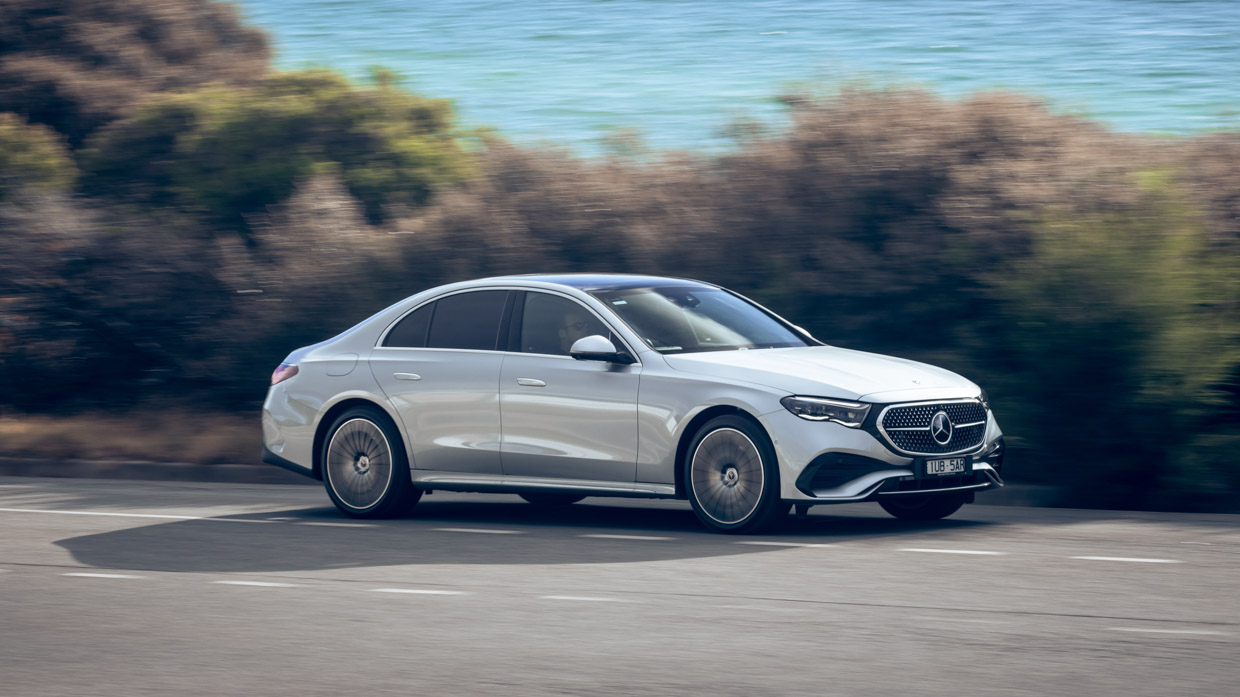
Safety features fitted to the car as standard include:
Across our week with the new E-Class, we were able to test some of the in-built safety features and found them to be generally well-tuned. We didn’t feel the need to interrupt or switch off the lane keeping system operation (which is rare in our testing) as its tuning is nuanced and sophisticated.
The blind spot monitoring is sensitive, with loud beeps, but the adaptive cruise control is fast-responding and smooth in operation.
While few owners buy a large luxury sedan in the hope of miserly running costs, an interesting gulf is emerging in this space: the electric vehicles in the premium space that are selling well are considerably less expensive to fuel – given most buyers in this part of the market have driveways or garages in which a charger can be fitted.
The E300? Well, this is a car you still have to drive to the petrol station (already a foreign feeling for, say, Porsche Taycan, BMW i5 or Benz EQE owners). And the bill at the filling station isn’t small.
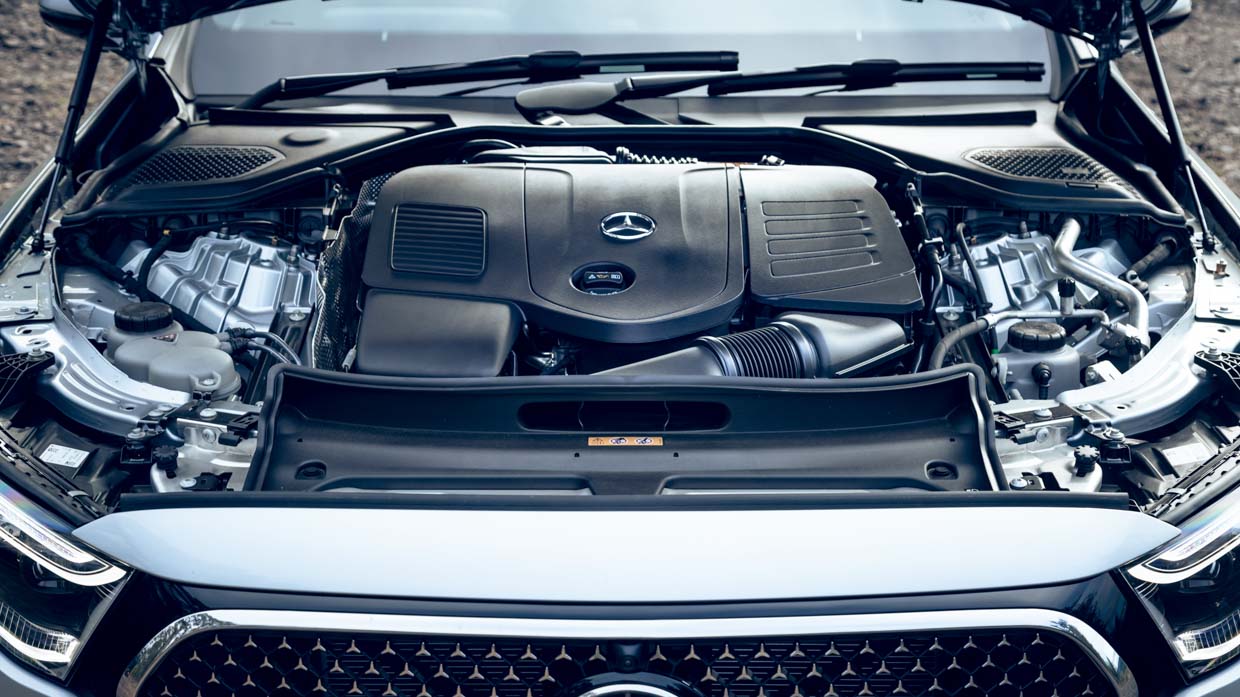
The E300 has a moderately-sized 66-litre fuel tank and returned about 10.0L/100km in mixed driving during our test – meaning, at $2.20 per litre for the required, minimum 95-octane fuel, every 100km of driving in the E-Class costs $22. In an EV, charged at home? More like $7.0, or $15 if charged on the open road.
We bother to mention EVs because pure electrification is a substantial component of Australian sales in the luxury segment. And, if you aren’t much of a road-tripper (where electric cars do still require more planning than their petrol counterparts), refuelling the car at home while you sleep – and not visiting a dirty petrol station – is, indeed, a luxury.
It might have been a different story if Mercedes-Benz still sold a diesel E-Class locally. Buyer preferences for diesel have dropped off, but their fuel economy upsides are still clear: Europe’s E220d four-cylinder oiler claims 5.5L/100km, while even the E450d six-cylinder used just 6.6L/100km in European tests.
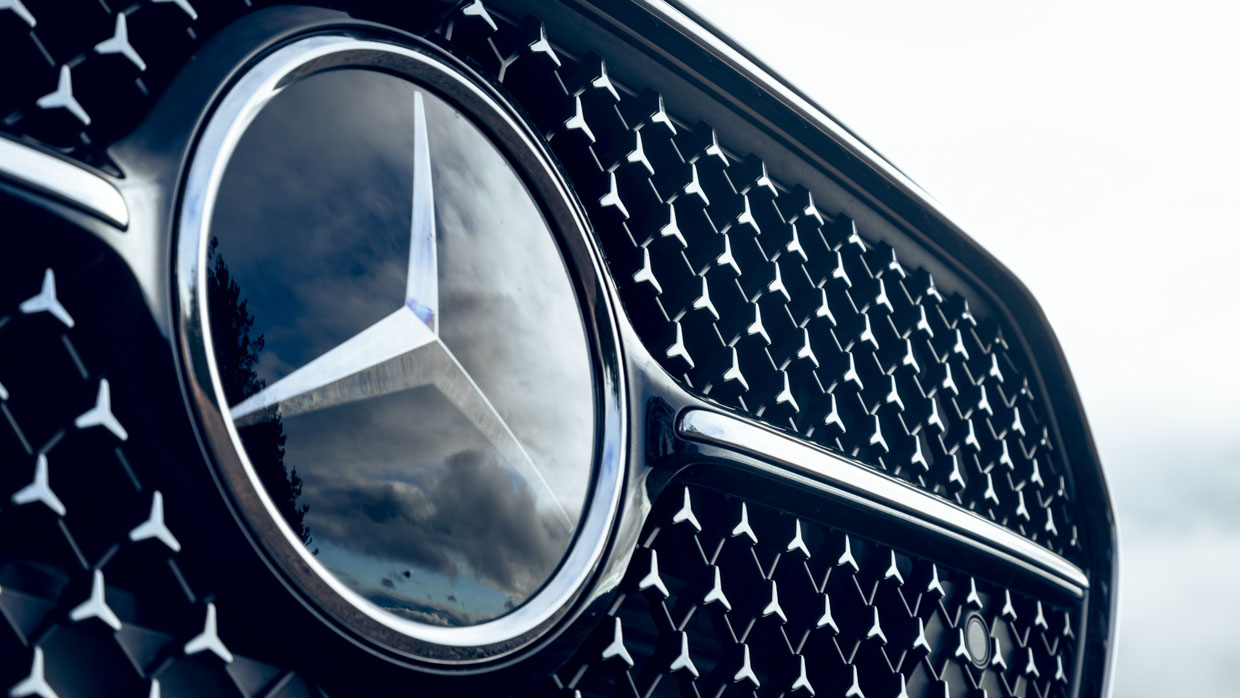
Then there’s the servicing – again, this isn’t a cheap car to run. Although Mercedes-Benz caters well to high-milers (allowing 25,000km between scheduled 12 month maintenance visits), a five-year/125,000km plan for the E300 costs an eye-watering $6800 (5.4c/km). Audi’s five-year/75,000km A6 service plan is appreciably cheaper at $3580 (4.7c/km).
New car warranty for the E-Class is the now industry-standard five-year/unlimited-kilometre arrangement.
The new E-Class is, in some ways, a difficult car to rate: should traditionalists simply be happy Mercedes-Benz still cares enough to bother selling the ‘E’ when the equivalent SUV outsells it tenfold? Perhaps.
That said, E-Class buyers are typically solid Mercedes-Benz loyalists, and they shouldn’t have to settle for anything second-rate. While the new W214-chassis ‘E’ is a good vehicle to drive and to ride in, the local specification leaves a few key things to be desired.
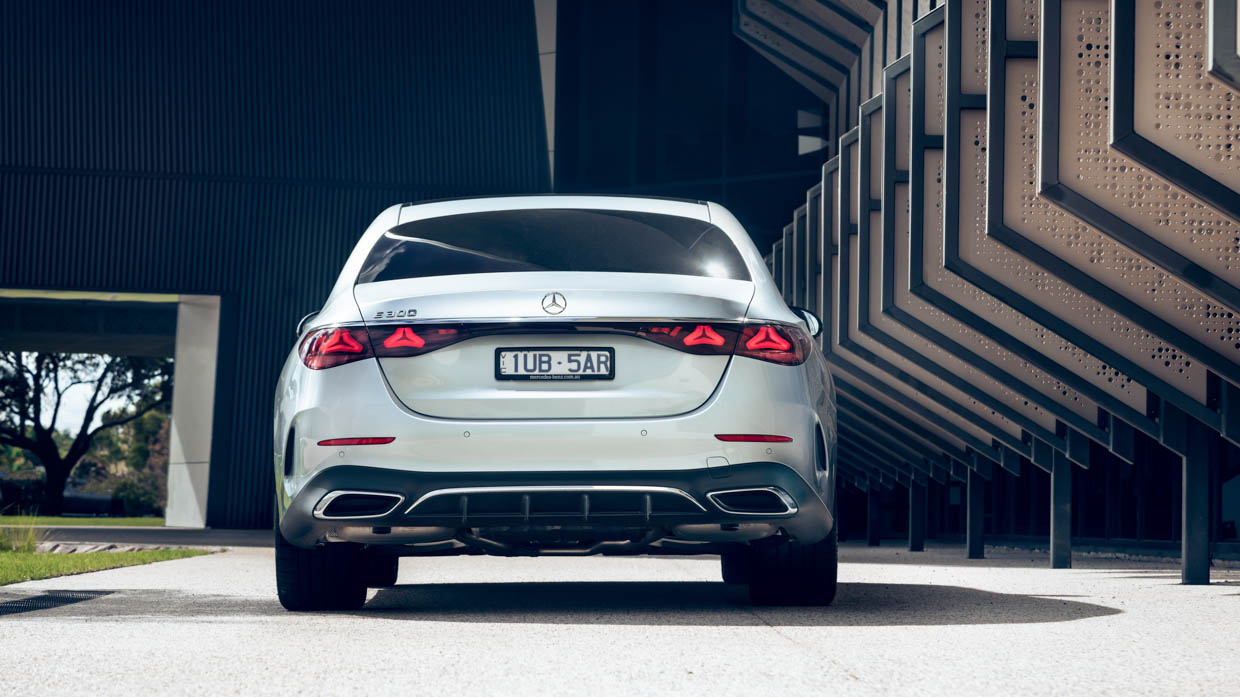
What we see as effectively mandatory-take options drive the price up, and the exclusive availability of AMG-line specification – big wheels and no bonnet star included – probably make the luxe-spec E300 feel edgier than it needs to be. Leave that to the AMGs.
But it’s really a pricing issue here. Six-cylinder rivals cost about as much as the four-cylinder E300, bringing with them considerably more effortless powertrains. Rival four-cylinders are considerably cheaper than the Mercedes yet they aren’t far behind on standard spec.
In our view, the E300 should really have been the E450 or the E450d for Australia – if you can only bring one spec, and it’s going to cost this much (before key options are added!), it should have had the X-factor that continent-crushing engine size brings.
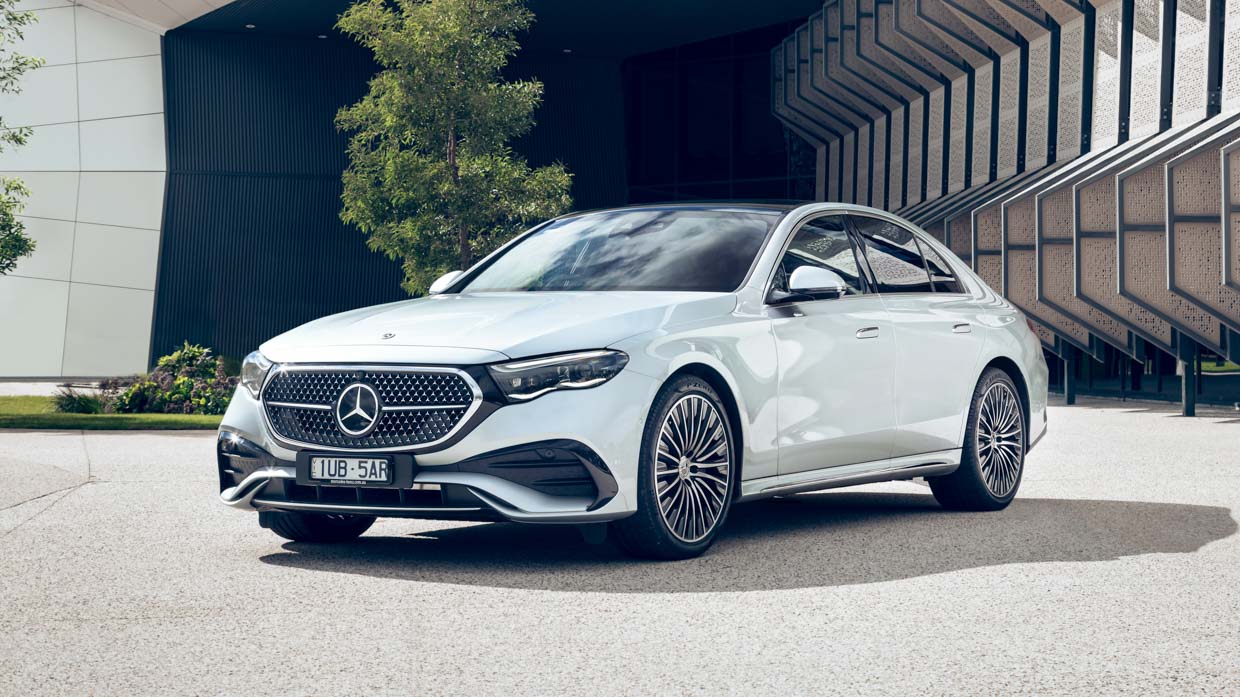
Mercedes itself might well riposte by saying that, well, if you want that sort of choice, you can get it in the GLE – but that’s not a sedan, and it costs a lot more: $161,700 for a straight-six petrol GLE450, or $168,800 for the straight-six diesel GLE450d.
That said, if things like engine displacement and cylinder count make your eyes glaze over, and you’re a fan of the three-pointed star, and you don’t mind splashing out on the E300’s option packs, then it is reasonable to say there is much to like about the new E-Class.
It’s a dignified car by appearance that drives in an elegant and comfortable manner (most of the time), wafting along in precisely the manner one expects from a traditional Mercedes-Benz saloon car. We just wish it had the effortless engine to match.
Key specs (as tested)
About Chasing cars
Chasing Cars reviews are 100% independent.
Because we are powered by Budget Direct Insurance, we don’t receive advertising or sales revenue from car manufacturers.
We’re truly independent – giving you Australia’s best car reviews.
The estimate provided does not take into account your personal circumstances but is intended to give a general indication of the cost of insurance, in order to obtain a complete quote, please visit www.budgetdirect.com.au. Estimate includes 15%^ online discount.
^Conditions Apply
Budget Direct Insurance arranged by Auto & General Services Pty Ltd ACN 003 617 909(AGS) AFSL 241 411, for and on behalf of the insurer, Auto & General Insurance Company Limited(ABN 42 111 586 353, AFSL 285 571).Because we don’t know your financial needs, we can’t advise you if this insurance will suit you. You should consider your needs and the Product Disclosure Statement before making a decision to buy insurance. Terms and conditions apply.
Indicative quote based on assumptions including postcode , 40 year old male with no offences, licence suspensions or claims in the last 5 years, a NCD Rating 1 and no younger drivers listed. White car, driven up to 10,000kms a year, unfinanced, with no modifications, factory options and/or non-standard accessories, private use only and garaged at night.
^Online Discounts Terms & Conditions
1. Discounts apply to the premium paid for a new Budget Direct Gold Comprehensive Car Insurance, Third Party Property Only or Third Party Property, Fire & Theft Insurance policy initiated online on or after 29 March 2017. Discounts do not apply to optional Roadside Assistance.
2. Discounts do not apply to any renewal offer of insurance.
3. Discounts only apply to the insurance portion of the premium. Discounts are applied before government charges, taxes, levies and fees, including instalment processing fees (as applicable). The full extent of discounts may therefore be impacted.
4. We reserve the right to change the offer without notice.